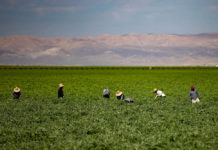Crowds can be powerful, dangerous, glorious, murderous. Think of the crowds in the streets of cities in the middle east in what has been called the Arab Spring, a spring that has blossomed in hope for justice and freedom, a spring that has also suffered the chill of brutal repression. Think of the crowds of the Occupy events around the US, citizens gathering in protest, in hope, in resentment, and sometimes in crazy violence.
Two Thousand or so years ago, Jesus of Nazareth was greeted by a crowd as he entered Jerusalem for what he knew would be the last week of his life on earth. Even though he had spoken clearly to his followers about being betrayed, arrested, tortured and executed, they and the crowd that surrounded him as he approached the City were hoping for, perhaps some of them sure of, a new day of justice and peace. They shouted, they waved palm branches, they laid their shirts and jackets on the road in front of him as if to make a carpet. They believed that the Anointed One for whom their people had prayed and waited for centuries was at the gate; this good, gentle Son of David, this one who fed the hungry, healed the sick, taught the Law and the Prophets in a way that set the heart and mind on fire. Nothing could stop him now, not even the most paranoid of their own leaders, not even the Empire and its legions. “Hosanna,” they shouted, “Blessed is he who comes in the Name of the Lord.”
Christians around the world remember and re-enact this scene in the Liturgy of Palm Sunday, the first day of Holy Week. Many worship services include an outdoor procession with palm branches and banners and music. It’s fun, especially for kids who run around and shout and may chase each other brandishing their palms as if they were swords. In addition to the pious, hopeful, committed adults who accompanied Jesus into Jerusalem on the first Palm Sunday, there were doubtless kids doing the same kinds of things.
The week passes. Jesus spends the nights outside the City and each morning returns to continue to teach and to confront those who reject his teaching. A certain tension, a certain foreboding begins to fill the City. The great feast, Passover, is at hand. Jesus and the twelve disciples whom he calls apostles share the ritual meal and remember the liberation of their people from slavery and the beginning of the journey to freedom in a land of promise. Jesus speaks the strange words, this bread is my body, this wine is my blood. One of the twelve leaves early. Then they all leave to return to the place outside the City where they are once again to spend the night. There, the one who left early, returns and brings with him the police. Jesus is arrested. During the night he is interrogated by officials who accuse him of blasphemy and insurrection. In the morning he is handed over to the Roman governor for execution.
On Friday morning the Roman governor, who may or may not actually execute this strange man is confronted by another crowd. This crowed is not hopeful and full of joy like the crowd on Sunday. This crowd is angry. They are not shouting hosanna and blessing, they are shouting, away with him, crucify him. And so it is. After being flogged and abused, Jesus is taken out of the City to the hill where the Romans execute criminals by what is intended to be as cruel and unusual as possible. Crucifixion is a message from the Empire: This is what we do to anyone who resists. Many in the angry crowd follow the deadly procession and stay to watch.
In the two crowds, the one on Sunday and the one of Friday, there were doubtless many quite sincere people; people in the Sunday crowd who really believed that Jesus was the Anointed One, people in the Friday crowd who really believed Jesus was a blasphemer and traitor. But I suspect that there were some people who were in both crowds, on Sunday shouting “Hosanna” because that’s what everyone else was shouting, on Friday shouting “crucify him” because that’s what everybody else was shouting. Crowds can be powerful, dangerous, glorious, murderous.
My wife Bonnie and I were living in New York City in 1967. I was a seminarian and she was a university student. We decided that we had to go to our nation’s Capitol to participate in a demonstration against the war in Vietnam which came to be known as the March on the Pentagon. It’s the biggest crowd we had ever been in. It is estimated that one hundred thousand citizens marched from the Capitol Mall to the Pentagon. It was relatively orderly. There were some arrests including Norman Mailer and Benjamin Spock. The group included veterans, lots of students, religious leaders, politicians, and some crazy people. I saw a few demonstrators who shouted abuse at police along the route of the march. Whenever I could I would go up to the police officer and apologize. I think it is what the Man in the crowds on Sunday and Friday wanted me to do, the Man who after that holy, horrible week rose again, the Man whom I love and try to serve.
Canon Marvin Bowers in a retired clergyman and may be reached at fr************@***il.com.







